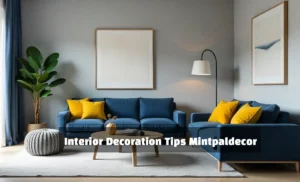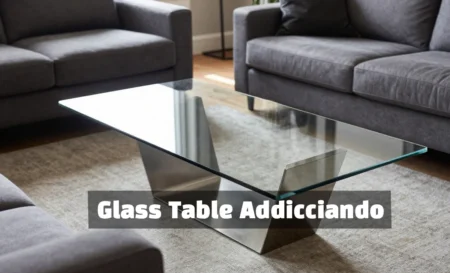Spending time outdoors surrounded by nature is one of life’s great joys. Outfitting our patios, decks, and gardens with comfortable and stylish outdoor furniture allows us to relax and entertain guests in these spaces. However, outdoor furnishings are exposed to the elements and will inevitably show wear and tear over time. Taking the proper steps to weatherproof outdoor furniture is key to maintaining its beauty and prolonging its lifespan.
In this comprehensive guide, we will overview the importance of weatherproofing, provide tips for specific outdoor furniture materials, and discuss maintenance practices for optimal longevity. Follow these recommendations, and your outdoor furniture will withstand the test of time.
Why Proper Weatherproofing Is Essential
Outdoor spaces are highly vulnerable to weather conditions and environmental factors. From blazing sun and drenching rains to gusty winds, high humidity, and freezing temperatures, outdoor furniture endures it all. Even if stored under a covered patio or gazebo, exposure can still cause noticeable deterioration over time.
Failure to properly weatherproof outdoor furniture will lead to:
- Fading from sun exposure and loss of color vibrancy
- Warping and cracked wood from repeated moisture absorption
- Rusting and corrosion on metal surfaces
- Mildew and mold growth in damp, humid climates
- Fabric wear including tears, holes, and seam splits
For expensive, high-quality outdoor furniture you want to last for years, appropriate weatherproofing is a must. Certain materials like teak wood and powder-coated metals have innate weather resistance. However, all outdoor furniture requires some degree of sealing and protection for optimal longevity.
Key Outdoor Furniture Materials and Weatherproofing Needs
Outdoor furnishings are crafted from a range of materials, each with distinct vulnerabilities to the elements:
- Wood: Susceptible to moisture damage, UV fading, cracks, and warping
- Wicker: Prone to becoming brittle and faded when unprotected from sun and rain
- Metals: Develop rust when unsealed from water and humid conditions
- Fabrics: Can experience fading, mold/mildew, and faster wear without treatment
Fortunately, there are specialized weatherproofing products for each material type. Routinely applying these sealers and protective layers is the best way to maximize durability.
Weatherproofing Tips Based on Furniture Material
Certain weatherproofing techniques are better suited for specific outdoor furniture materials. Here are tips tailored to the three most common types.
A. Weatherproofing Wood Furniture
Wood furnishings bring beauty and warmth to outdoor living areas. However, unfinished wood left unprotected will soon warp, crack, and deteriorate when exposed to the elements. The key is using weather-resistant wood species along with protective finishes.
Use Weather-Resistant Wood Species
Opt for dense, oil-rich hardwoods that withstand moisture, sun, and aging. The best choices include:
- Teak: Contains natural oils that make it water, mold, and UV resistant
- Eucalyptus: Dense grain resists weathering and naturally repels insects
- Shorea: A sustainable Burmese teak alternative that is very durable
- Cedar: Its natural oils help cedar resist water, warping, and decay
- Redwood: Holds up very well outdoors and ages gracefully to a silvery patina
- White oak: Dense grain and tannins make it weather-resistant
More affordable softwoods like pine and fir lack natural weather resistance. Using weatherproof finishes is especially critical with these woods.
Routinely Apply Wood Sealants
Sealing outdoor wood furniture should be done as soon as it’s purchased and then regularly reapplied. This protects the wood from water absorption and sun damage.
Common outdoor wood sealants include:
- Teak oil – Contains UV blockers to reduce graying
- Tung oil – Penetrates deeply to protect from moisture
- Spar urethane – Forms a protective coating resistant to sun, water, and chemicals
- Marine varnish – Flexible to prevent cracking, fading, and swelling
Follow application directions closely and reapply sealant every 1-2 years. Quick drying spray sealants make upkeep fast and easy.
Use a Weatherproofing Wood Stain
For colored furniture, use a specially formulated wood stain for outdoor use. These contain UV blockers, mildew inhibitors, and resins that stand up to rain, snow, and sun exposure. Re-stain furniture as needed to keep the color rich.
To keep wood furnishings looking their best:
- Inspect regularly for cracks in the finish where moisture can penetrate
- Lightly sand and reseal worn areas to maintain protection
- Keep wood cleaned and dry to prevent warping
- Store furniture undercover during extreme weather
Proper prep, sealing, and care will allow your wood furnishings to develop a graceful patina over many years of use.
B. Weatherproofing Metal Furniture
From sleek aluminum to durable wrought iron, metal is a popular outdoor furniture material due to its strength and vast design possibilities. However, all metals are prone to rusting and corrosion when left unprotected from the outdoor elements. Applying the right weatherproofing for metal furnishings is crucial.
Choose Rust-Resistant Metals
The metal furniture is constructed from affects its inherent weather resistance:
- Aluminum – Develops an oxide coating when exposed to air that protects against corrosion. Look for thicker, commercial grade aluminum.
- Stainless steel – Contains chromium that gives it excellent rust resistance, but quality varies. Opt for 316 marine-grade steel.
- Wrought iron – Susceptible to rust but can be maintained through re-painting. Ductile iron has added corrosion resistance.
- Steel – Tend to rust quickly and needs a weather-resistant coating. Opt for galvanized or zinc-plated steel.
- Wicker – Usually made from powder-coated aluminum or steel but can corrode when scratched.
Even the most weather-resistant metals need some TLC. Use these tips to keep metal furniture in top shape:
Remove Rust Promptly
Check frequently for rust spots and treat ASAP before they spread. Light rust can be removed with a wire brush. For heavier rust, use a rust treatment solution or naval jelly.
Sand cleaned areas to remove residue and provide an optimal surface for painting. Prevent future rust by repainting these areas with weatherproof enamel paint.
Apply a Protective Base Layer
After cleaning, apply a primer formulated for metals to provide a corrosion-resistant base layer. Rust-inhibiting primers contain chemicals that limit moisture contact with the metal.
For iron furniture, zinc-rich primers offer the best rust prevention. Allow primer to dry fully before applying the topcoat.
Use Exterior-Grade Paints and Enamels
High-quality exterior paints and enamels will hold up much longer than indoor versions when exposed to sun, wind, and rain. Look for the following weather-resistant coatings:
- Outdoor enamel paint – Forms a durable, glossy coating resistant to fading and chipping
- Marine varnish – Specially formulated to withstand moisture, UV light, and weathering
- Powder coating – Electrostatically applied plastic powder dries into a weatherproof ceramic coating
Reapply paints and varnishes regularly as needed to maintain protective coating integrity.
C. Weatherproofing Fabric Outdoor Furniture
From cushions to slipcovers, fabrics help make outdoor furniture cozy and inviting. But without proper weatherproofing care, they’ll quickly become faded, torn, and stained from outdoor exposure. Follow these tips to keep fabrics looking fresh.
Choose Performance Fabrics
Not all fabrics are created equal when it comes to weather-resistance. Seek out technical performance fabrics designed to withstand sun, rain, moisture, and everyday wear and tear.
Ideal weather-resistant outdoor fabrics include:
- Acrylic – Resists mildew, stretching, and UV damage but not very breathable
- Polyester – Colorfast, water-repellant, and fast-drying but still needs chemical treatment
- Olefin – Mold, mildew, stain, chlorine, and UV resistant but can fade over time
- Vinyl – Extremely waterproof and easy to clean but can be prone to cracking
Higher priced options like Sunbrella fabrics offer some of the best performance and longevity. Check fabric labels to see if treatments have been pre-applied for water/stain resistance.
Apply Fabric Waterproofing Sprays
Even the best outdoor fabrics benefit from an added layer of waterproofing. Fabric sealants fill in the tiny holes in fabric weaves to prevent water absorption. Choose a spray made for outdoor use.
Before initial application, launder/clean fabrics well. Apply a light, even coating and allow to fully dry. Reapply every 1-3 months as needed for optimal water resistance.
Use UV Protectant Sprays
Sun exposure can cause fabrics to fade over time. UV protectant sprays provide an invisible barrier against the sun’s rays to help fabrics maintain their vibrancy. Reapply a UV protection spray after laundering fabrics.
Allow Proper Drying & Ventilation
Never store damp cushions or furniture covers. Always allow fabrics to completely dry before storage to prevent mold and mildew growth. Rotate and fluff cushions regularly to allow airflow and drying.
Clean Fabrics Routinely
Dirt, debris, and spills on fabric can breed mold and mildew if left untreated. Clean fabrics regularly with a mild soap and water solution. For tough stains, use a fabric cleaner made for outdoor use according to label directions.
General Weatherproofing and Maintenance
In addition to material-specific treatments, there are some general upkeep practices that will maintain and extend the life of all outdoor furniture.
Use Weatherproof Covers
High quality furniture covers offer an added layer of defense when furniture is not in use. Look for covers made from water-resistant and UV-treated materials. Secure covers to furniture using straps to keep them in place.
Apply Protective Sprays
Silicone-based sprays act as a lubricant and protectant for plastic, vinyl, and metal. Apply to furniture joints, hardware, rails, and wheels as needed to prevent squeaking and sticking.
Inspect and Clean Routinely
Regularly inspect furniture for scratches, gaps, rust, fraying, mold, and other damage where the elements can gain a foothold. Address issues immediately to prevent escalation.
Keep furniture free of dirt, pollen, and other environmental debris that can lead to discoloration and deterioration. Maintain waterproof coatings with scheduled reapplication.
Consider Furniture Covers
Breathable furniture covers allow air circulation while still offering an extra level of protection from rain, wind, dust, and more extreme UV exposure. Use covers during peak sun and inclement weather.
Check the Frame
For upholstered pieces, check the internal frame regularly for rust and structural stability. Tighten hardware and lubricate joints over time to maintain durability.
Clean Under Cushions
Lift and rotate cushions frequently to prevent mildew growth in shaded areas. Vacuum beneath regularly to remove moisture, dirt, and debris.
By being diligent with general weatherproofing maintenance and repairs, your furniture will last season after season of use and enjoyment.
Conclusion
Hopefully this comprehensive guide has provided you with helpful insights on properly weatherproofing outdoor furniture. While all pieces require some degree of care and maintenance, taking the time to proactively protect them from the elements will maximize their lifespan and functionality.
The key takeaways include:
- Choosing weather-resistant materials such as teak wood, powder-coated aluminum, and performance fabrics
- Routinely applying specialized sealants and protective coatings suited for the specific furniture materials
- Conducting thorough cleaning, repairs, inspections and being vigilant about re-applying weatherproofing products after cleaning or seasonal storage
- Using furniture covers, drying thoroughly, and other general maintenance tips
While it may seem like a lot of work, establishing good weatherproofing and care habits will save you money and headaches in the long run. Your furniture will retain its structural integrity, beauty and comfort for many seasons, allowing you to enjoy relaxing in your outdoor living space.




